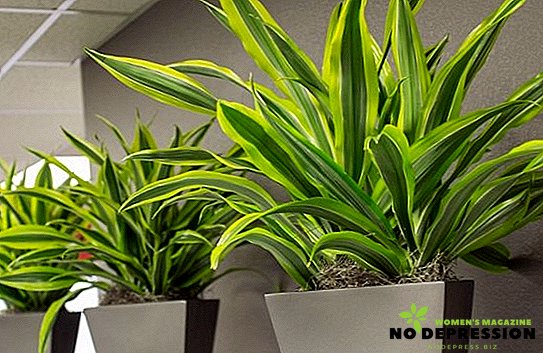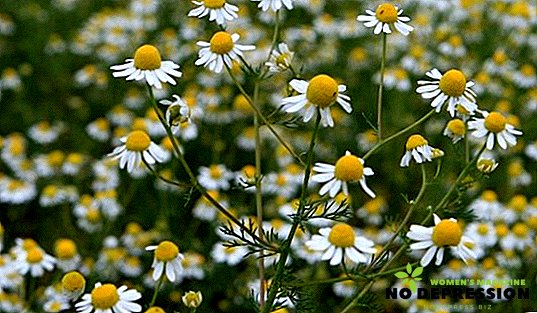Dracaena - one of the most beloved flowers. Despite the fact that his homeland - rainforests, proper care will allow him to grow at home. The main thing is to strictly follow all the recommendations given in the article.

Features care for dragon stage
In principle, the care of this culture is quite simple - even a person who is not very familiar with plants will be able to cope with these issues without problems. The main thing is to observe a number of simple conditions.
The soil
Dracaena - completely unpretentious plant to the composition of the soil. And the rougher the earth, the better the plant. The main thing is to transplant the flower after you bought it in the store. To do this, you must either purchase ready-made soil mixture, or make it yourself.
It is necessary to take in equal parts clean sand, peat and rough sod land. Mix thoroughly and spill a strong solution of potassium permanganate. A day after cultivation, the earth is ready to embrace the plant.
Transplant features
The root system of the plant is located in the upper layers of the soil. However, the pot for planting should be sufficiently deep and stable. In addition, it must be remembered that this plant does not tolerate stagnant moisture, therefore, it is necessary to provide a drainage layer about 5 cm thick. Many gardeners use expanded clay, but it is recommended to use more weighty materials: gravel, marble chips, etc.
Simultaneously with the drainage function, such heavy materials create a good counterweight. Otherwise, the dracaena will simply tip over if it blows to a decent size.
The size of the pot is easy to determine: at 15 cm of the stem, dracaenes should account for at least 5 cm of the tank diameter. For example, if a dracaena has a height of 60 cm, the diameter of the tank must be at least 20 cm. The material does not matter. Dracaena feels great in plastic and ceramics. Again, clay is still preferable. It has enough weight so that the flower does not tumble.
It is possible to carry out transplantation year-round, but it is recommended to carry out work at the end of winter, because in early spring the plant begins an active phase of growth and does not need to disturb the plant during this period.
Young plants need to be transplanted once a year, adults - less. Oriented to the roots. As soon as they become visible above the surface of the soil, then it is time.
The best and less traumatic way of transplanting is with the help of an earthen coma. But if the plant is too large, just once a year replace the top layer of soil with a thickness of about 5-7 cm. Work very carefully so as not to damage the root system.
Watering
 Dracaena loves water very much, but at the same time does not like to swim in it, therefore it is impossible to do without drainage. With proper planting and arrangement of the drainage layer, a qualitative outflow of excess moisture from the roots will be ensured.
Dracaena loves water very much, but at the same time does not like to swim in it, therefore it is impossible to do without drainage. With proper planting and arrangement of the drainage layer, a qualitative outflow of excess moisture from the roots will be ensured.
The most correct thing is to put a pot of dragon fruit in a wide pan. Peat, moss or expanded clay are put into it. All liquid that drains from the pot will be absorbed into these materials. Then it will gradually evaporate, creating the necessary level of moisture around the flower. it is recommended to spray the dracaena over the crown more often with the use of warm and settled moisture, which will prevent the leaves from drying out.
The exact schedule of irrigation is difficult to make, but there is one rule - it is quite rare in winter and more often in summer. Much depends on the size of the color, conditions of detention. Usually oriented to the dryness of the earthy coma. As soon as it dries about 3 cm, you need to water the plant. The main thing is not to dry the soil completely, as this may cause the death of the plant. And it is better to pour a little more, after 20 minutes to drain the excess, than to pour water.
Water for irrigation should be at room temperature. If she is poured from the tap, then it is recommended to allow her to stand at least 12 hours. Then boil and cool. Instead of boiling, you can freeze the liquid in the freezer.
Air temperature
Dracaena loves warmth, but can not stand the heat. It is better if the temperature fluctuates around +20 - +26 degrees with active growth of dracaena. Usually this period falls on the second decade of March to October. In the rest period, the temperature should be about +15 degrees.
By the way, if the temperature of the content drops below + 11 ° C, the probability of disease outbreaks is high at any time. Perhaps even the appearance of rot and dropping leaves. This feature should be considered.
Lighting
If the plant is on the windowsill, then pritenuyut his light blinds, white paper, light curtains. If on the table or nightstand next to the window, then additional shadowing is not required. At the same time, good lighting should be year round. That is, during the winter holidays too.
If you artificially finish the plant, the dracaena will begin to bloom right before your eyes. However, it is necessary to use only special fitolamps - such devices give the necessary amount of light, but at the same time they will not burn the dracaena.
Shaping
Plant height can reach 3.5 meters. But if you do not carry out molding work, the dracaena will look awful: with improper care, it resembles a long and thick stem with bunches of leaves on top. An order of magnitude more profitable will look like a trunk with several shoots, which will allow you to get a beautiful and lush crown.
 How to achieve this result, if dracaena pulls up? By itself, she will not release side shoots. We'll have to sacrifice a smart hat. For this you will need:
How to achieve this result, if dracaena pulls up? By itself, she will not release side shoots. We'll have to sacrifice a smart hat. For this you will need:
- sharp sterile knife;
- garden pitch or crushed tablet of activated charcoal.
Make a cut at a level of about 5 cm below the first leaf: thus, in the hands should be the top and short stalk. The main thing is that the cut is very smooth: even in the presence of tiny tears, a rotting process can occur. The wound is required to cover with a boil or sprinkle with a crushed tablet.
After some time, buds will swell on the trunk and young shoots will appear. By the way, the top is not thrown away. You can try to root it under cover in the soil or even just in the water. Only be sure to slice the dip in the root stimulator. So the process will go much faster.
The main danger of forming works is that only a new escape can appear. In this case, you will have to perform this procedure again after a certain period. By the way, if the young shoots cut off the tops, then in the end you can get a beautiful tree with a lush crown. Only be sure to give the plant to move away from the previous injury. For some time they even help: they water it with a solution of any adaptogen. For example, Epin, other biological means.
Important point: the forming works begin to be carried out when the stem height reaches 30 cm.
Fertilizers
With the active growth of the plant it should be regularly fed. Any organic or mineral supplement will do, since dracaena is an omnivorous plant. It is important not to overdo it. Once every 3 weeks will be quite enough. And do not exceed the dosage specified by the manufacturer. More benefit from this will not work. But the burning of small feeding roots - easily.
Recommendations for pest and disease control
There are not many insects that "love" the dragon plant. But there are some pests that can cause the death of this plant. These include the shield and spider mite. Most often they settle on a plant when the microclimate in the room is hot and dry - they do not appear at normal humidity levels.
But if such an attack still overpowered the dragon plant, you will have to arrange a plant of souls: alkaline or potash. To do this, wrap the pot with foil or foil, put in a bath, generously lubricate the leaves with soap (household or potash) and after 20 minutes, rinse thoroughly with warm water.
If such a procedure did not bring improvement, then you will have to use any systemic insecticide.
Also, this plant is not particularly susceptible and diseases, which, if there are, then with the appearance of certain factors, in violation of the rules of care:
- excessively high or low air temperature;
- stagnant water in the pan or pot;
- constant drafts;
- low humidity microclimate around the pot.

By eliminating these problems, you can easily avoid diseases. The first sign of their problems - the appearance of the leaves. The tips begin to dry out, spots appear that darken. If there is a massive abscission of foliage, this signals a serious damage to the plant.
At the same time, periodic yellowing of 2-3 lower leaflets is a natural norm. The old ones are dying off, the young ones are growing up, everything, as was introduced by nature. In general, the average lifetime of a leaf in good conditions is about 2.5 years. If yellowness is abhorrent, then you can simply cut the leaf to a healthy tissue. Anyway, he will gradually die and fall off.
Some tips on dragonseed care
The following tips will help your plant look lush and healthy:
- In the warmer months, you need to make a flower with a plant on the balcony "breathe." The main thing is to cover from drafts, wind. Also recommended pritenyat dracenum.
- Over time, a lot of dust and dirt accumulate on the leaves. A young plant is easy to wipe with a damp soft cloth. Well, an adult tree perfectly tolerates a regular warm shower. And do not have to rub each leaf.
- To make dracaena look as lush as possible, it is recommended to sprinkle the top layer with a small amount of gravel, but so that it does not completely cover. Due to this, the pebbles will prevent the evaporation of excess moisture, and the root system will breathe well.












